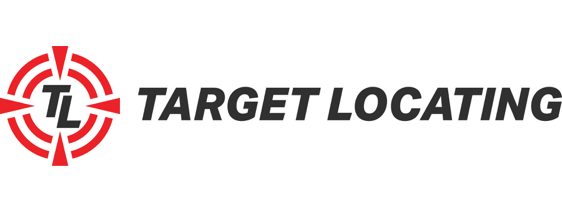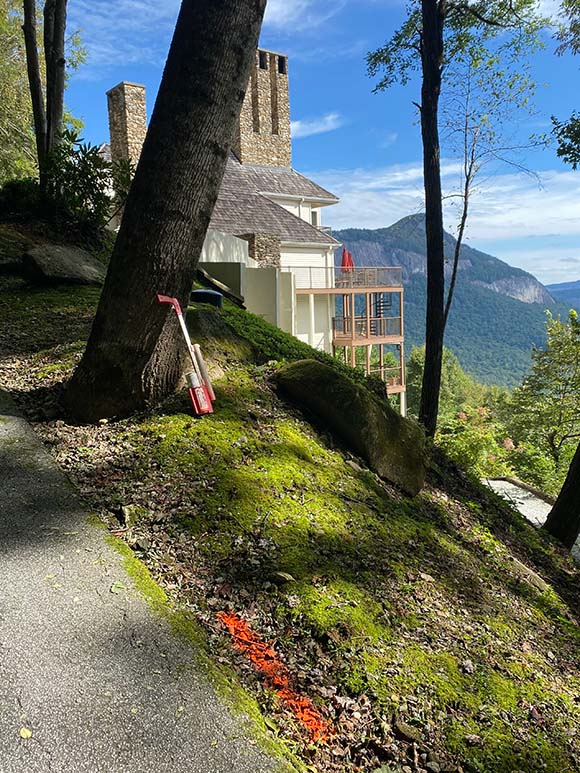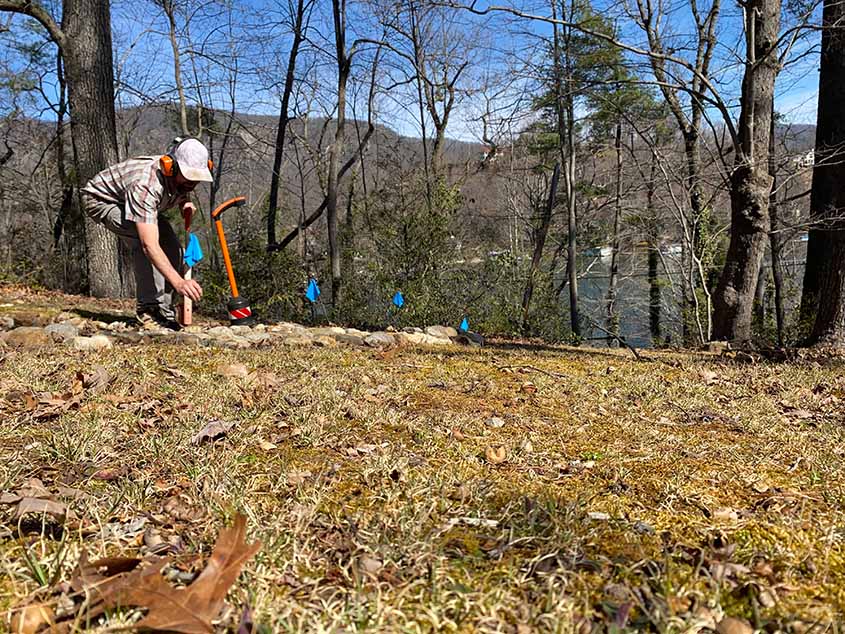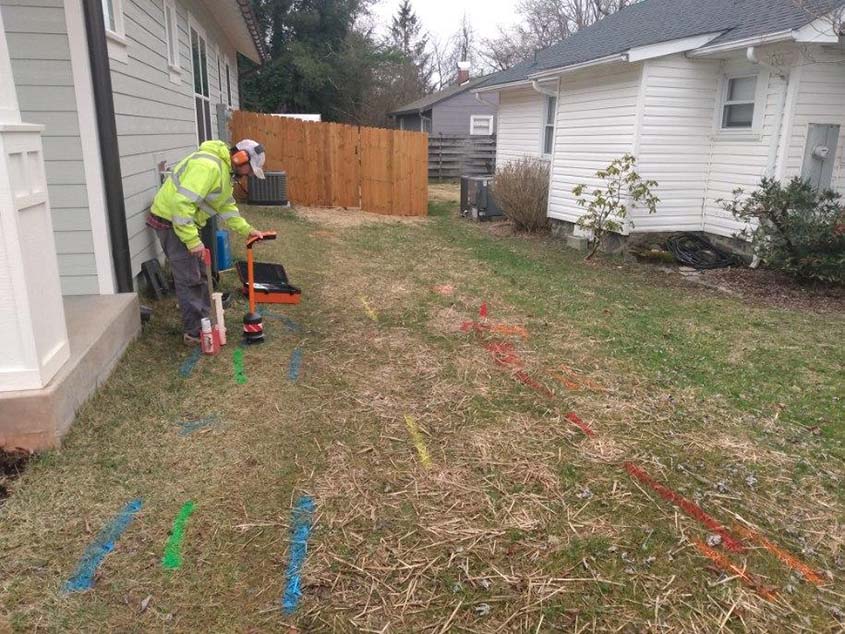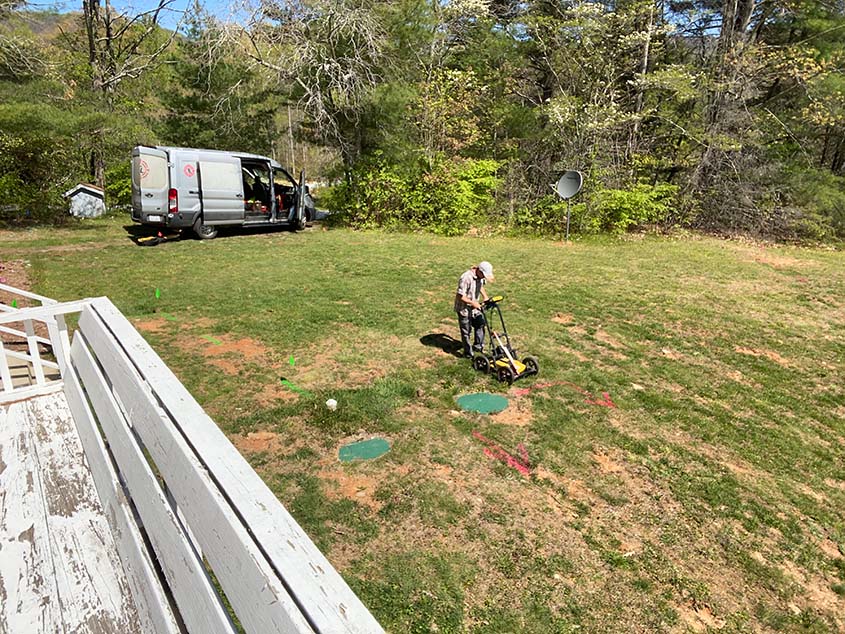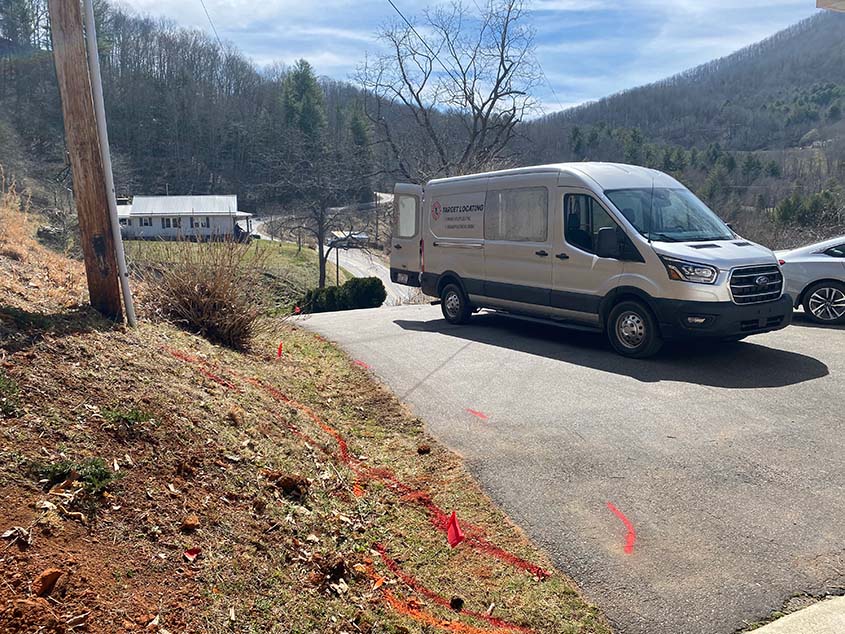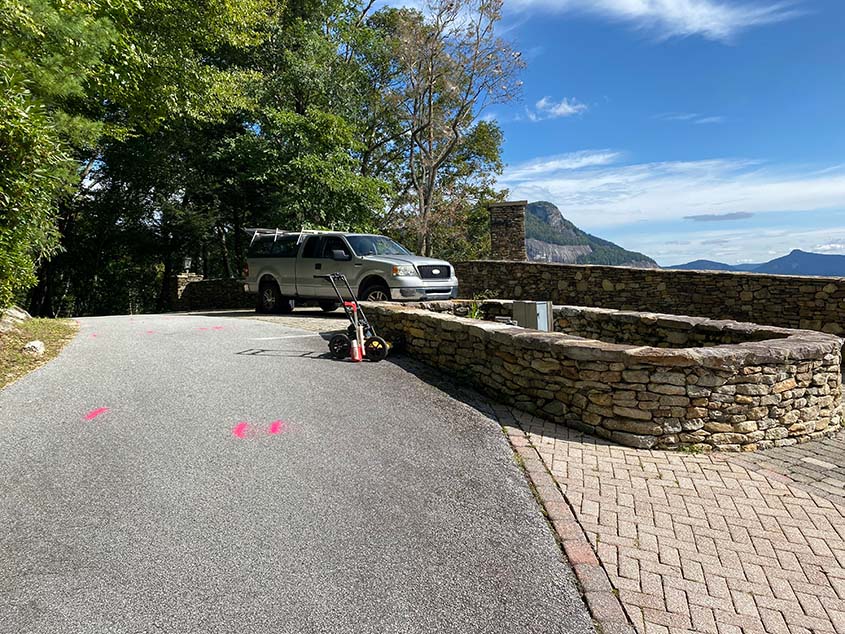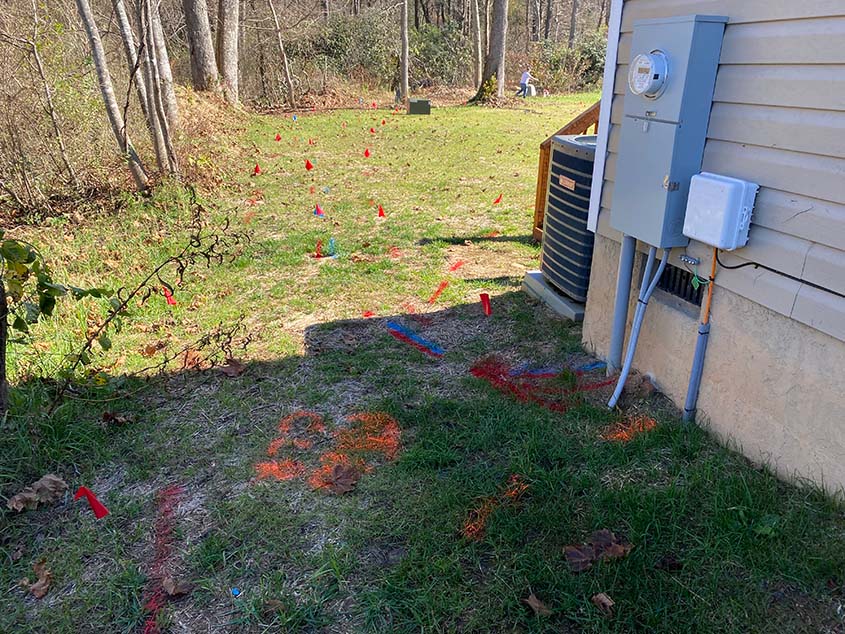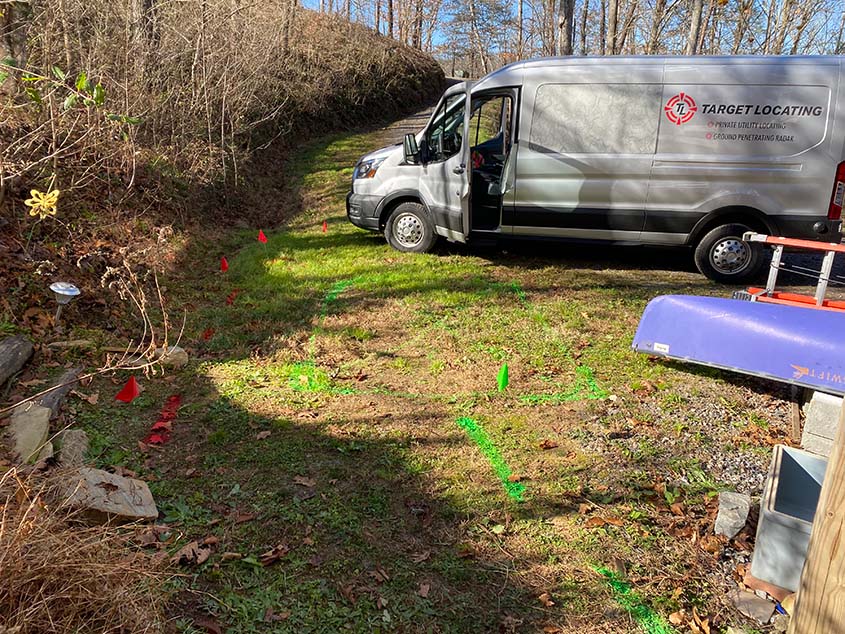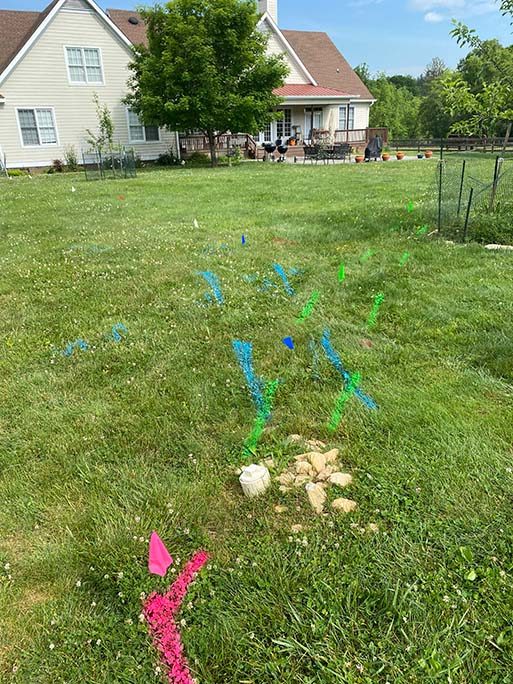We Care About You
We recognize that our residential customers have unique needs. For many, the utility locating industry is unfamiliar and requires some education to gain confidence in hiring a contractor. Our intention is to give you enough information and resources to put you at ease.
Below we explain some basic concepts about the services we offer. We outline the steps you need to take to prepare for your initial contact with us, as well as links to videos and articles that will help you to gather this information. We conclude with photographs and descriptions of some of the jobs we have completed.
Public vs. Private Utility Locating
The national call-before-you-dig service is free and accessible by calling NC811, SC811 or TN811, depending on where you live. It covers utilities that are buried in roadways, easements, sidewalks, or other public property.
What Else Does 811 Cover?
Many people are not aware that 811 covers some utilities on private property. Electric, gas, and phone/cable lines are owned by the utility provider right up to the meter or junction box. These are covered by 811 until they reach the meter or box, even if the lines run across your yard. So, if the meter or cable/phone box is mounted on the house, 811 will locate your utilities right up to the house.
If the meter or box is mounted on a pole within the property easement, 811 will only locate up to the pole. Beyond that, you will need a private utility locating contractor.
What is Not Covered By 811?
The Call-Before-You-Dig service never locates water and sewer on private property. They also don’t locate other secondary lines, such as electrical to out-buildings, well electrical, propane or other natural gas distribution, or septic systems. These are all considered private utility lines.
The dotted lines in the infographic below illustrate some common private utility lines. Notice all the lines running from the house to the outbuilding, the gas lines running to the propane tank, and the water and sewer lines running from the street to the house.
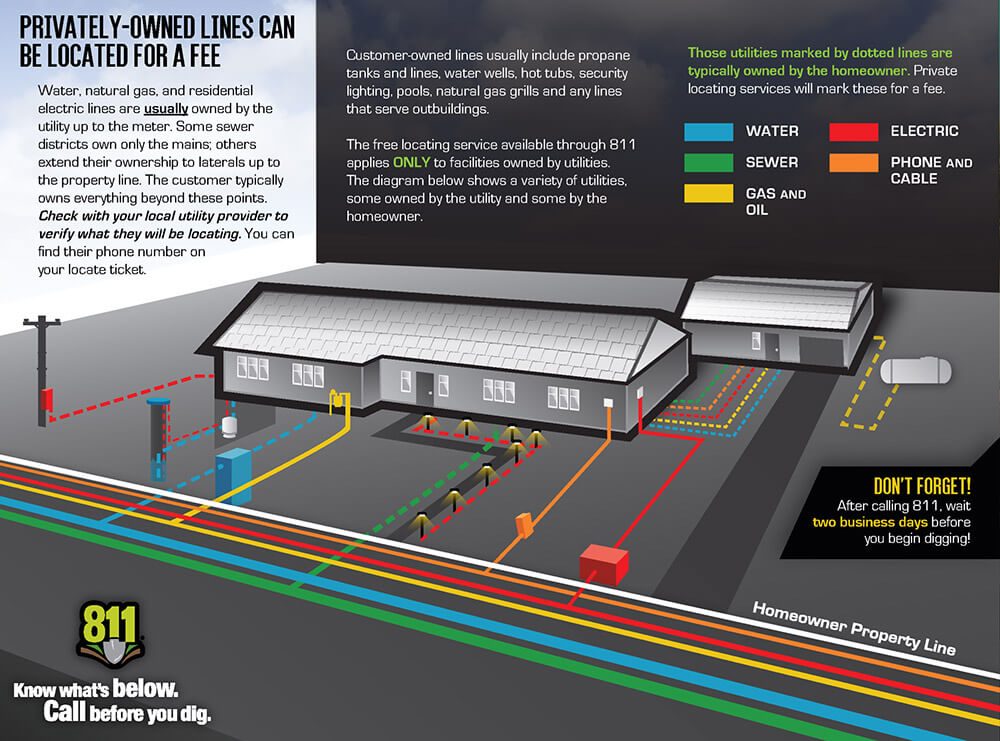
Infographic provided by the Common Ground Alliance, the non-profit organization which sponsors 811
Other private utility lines include those for ground sprinkler systems, invisible pet fences, decorative lamp posts, and satellite tv lines from the satellite to the home. To locate any of these types of utility lines, you will need a private utility locating contractor.
Our Services
Below we describe our services as they relate to our residential clients. A more complete listing of our services can be found on our Services page.
Private Utility Locating Services
We locate metallic utilities and utilities equipped with a tracer wire quickly and efficiently. These underground targets may include electrical, cable TV/telephone/fiber optic, gas or propane, and well-pump electrical. See our section on Public vs. Private Utility Locating to determine which utilities your local one-call contractor will locate for free.
Unlike 811 one-call contractors, we also locate water and sewer lines. The methods required are not as efficient as those used for other utilities. For water lines, we use electro-acoustic leak detection equipment. Sewer lines require the use of electronic transmitters or locatable rods. We typically locate water and sewer lines in an hour to an hour and a half, depending on accessibility.
Due to understaffing and a high volume of calls, It is often difficult to obtain 811 service for remote mountain settings or gated communities. To save time and meet their project goals, many people opt for private utility locating services in these situations.
Ground Penetrating Radar (GPR)
Our state-of-the-art GPR equipment allows us to find just about anything buried underground. GPR is an exclusive technology that can locate non-metallic piping greater than two inches in diameter, as well as other buried objects.
For residential projects, we typically use GPR to locate sewer lines, septic tanks, and septic leach field lines. When combined with the homeowner’s septic permit (obtained from the local health department), we have great success locating and mapping septic systems.
We also use GPR to locate gravesites. When a homeowner has a historical graveyard on the property, it can be useful to locate and map the graves. See other uses of GPR.
Plastic Water Line Locating and Leak Detection
Of the hundreds of residential water lines we have located over the years, the vast majority are constructed of small diameter plastic pipe or tubing (one-inch diameter or less). The only equipment on the market that can locate small diameter plastic water lines uses electro-acoustic technology. We use Sewerin’s Aqua Test T10 electro-acoustic leak detection system, the most advanced and reliable electro-acoustic equipment on the market.
Under the right circumstances, the Aqua Test T10 can be used to cost-effectively locate an underground water leak to help your plumber make a quicker and cheaper repair. If you think you have a leak, it may be useful to call Target Locating first to discuss ways you can diagnose your leak. Most plumbers simply don’t have the advanced equipment necessary to effectively diagnose exterior underground leaks that don’t surface. You could end up with a large plumbing bill and no results, as reported by many of our clients.
Electro-acoustic technology is most effective and straight-forward when used for homes in urban settings where the water meter is within 100 feet of the house. When water lines are 200 feet or greater in length, more planning and time in the field is required to locate the lines and leaks.
What We Need From You
Most of our residential locating projects take between one and two hours to complete. Our cost estimates assume that the homeowner has a good general understanding of how their underground utilities are laid out (or they have a representative that does) and how they can be accessed. If utility access points are not available at time of service and Target Locating cannot perform the work, minimum charges will be due.
First, make sure you have submitted an 811 ticket to have public utilities marked. Then check the list below to gather information about the type of locating project you are requesting. You will need this information when you call to schedule an appointment.
Water
-
Know where your water meter is.
This is usually at the perimeter of the property near the street, beneath a heavy metal lid. Sometimes it is difficult to tell if a meter belongs to you or your neighbor. Your 811 locator may mark your water meter, but if not, it may be necessary to verify its location with your municipality. Your water meter’s serial number or I.D. is typically printed on your bill, should they ask for it.
-
Know where all water shut offs are.
Once you know where your meter is, you can find your main shut off valve inside the perimeter wall that faces the meter. The valve will usually be somewhere along the bottom of the first floor, in the basement or crawl space. Quite often the water shutoff is near the hot water heater. This video from Any Hour Services will help you find your main water shutoff valve.
-
Make sure your water line is accessible.
To use electro-acoustic equipment to locate your water line, we must connect to it before, or very near your main shut-off valve before the water piping gets redistributed throughout your house. Thus, the water line cannot be framed behind walls. Also, we need approximately six to eight cubic inches of open space surrounding the water pipe to attach our equipment.
-
Eliminate any leaks from the interior of the house.
If you are looking for an underground water line leak, you must first rule out leaky faucets, running toilets, leaky hoses or spigots. Find out how to check for these types of leaks in this video from Any Hour Services. If you don’t feel confident in doing this yourself, you may hire a plumber to help you.
If no interior leaks are found, it is possible you have an outdoor underground leak. Call your municipality and ask them to check your water meter for water loss. They can tell you the approximate water loss in gallons per minute (GPM). We need to know this information because our equipment may not detect leaks less than one GPM.
Sewer
- Know where sewer clean outs can be accessed, as well as the general layout of the septic tank and leach field. This information is detailed on your septic permit, which is on file with your local Environmental Health Department. It is especially helpful if your septic permit is available at the time of service. If you don’t have a copy, please call your Health Department and request one.
Electrical
- When locating electrical lines to wells or outbuildings such as detached garages, we will need to know where electrical panels, conduits, junctions, outlets, etc. can be accessed. It may be necessary to de-energize circuits or panels to accurately locate these lines.
- Identify whether your well’s electrical line enters the building along with, or very near, the water line.
Propane
- Look at the line coming out of your propane tank. Is it copper or plastic? Locating copper propane lines is pretty straightforward, but if it is plastic and does not have a tracer wire we won’t be able to find it.
If you are not able to gather all the requested information, Target Locating can help with this at the time of service. However, it may result in additional service charges.
Do you have a locating project that’s considered tricky or unorthodox? Give us a call and we’ll let you know the feasibility and more about our equipment’s technical capabilities or limitations.
